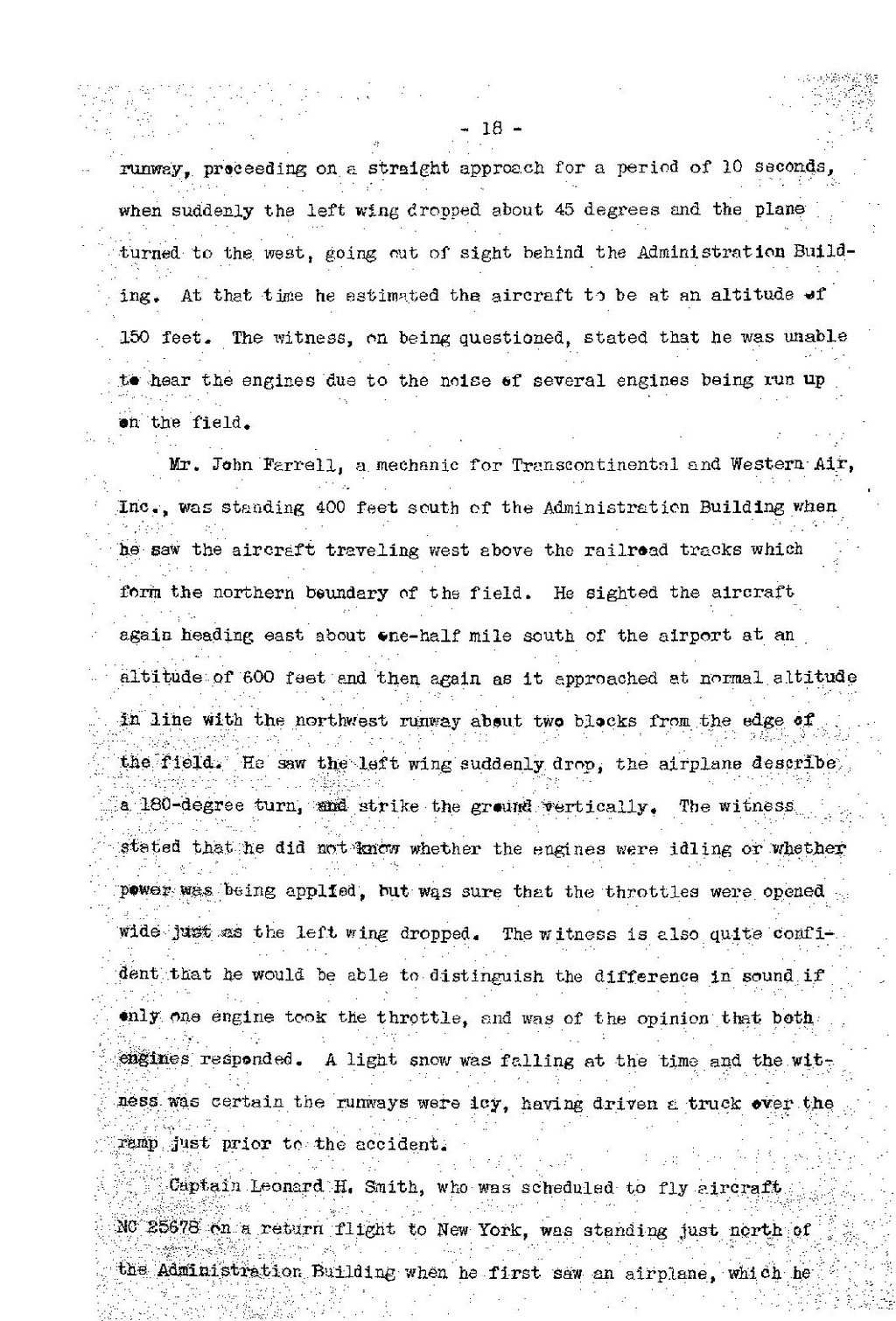- 18 -
runway, proceeding on a straight approach for a period of 10 seconds, when suddenly the left wing dropped about 45 degrees and the plane turned to the west, going out of sight behind the Administration Building. At that time he estimated the aircraft to be at an altitude of 150 feet. The witness, on being questioned, stated that he was unable to hear the engines due to the noise of several engines being run up on the field.
Mr. John Farrell, a mechanic for Transcontinental and Western Air, Inc., was standing 400 feet south of the Administration Building when he saw the aircraft traveling west above the railroad tracks which form the northern boundary of the field. He sighted the aircraft again heading east about one-half mile south of the airport at an altitude of 600 feet and then again as it approached at normal altitude in line with the northwest runway about two blocks from the edge of the field. He saw the left wing suddenly drop, the airplane describe a 180-degree turn, and strike the ground vertically. The witness stated that he did not know whether the engines were idling or whether power was being applied, but was sure that the throttles were opened wide just as the left wing dropped. The witness is also quite confident that he would be able to distinguish the difference in sound if only one engine took the throttle, and was of the opinion that both engines responded. A light snow was falling at the time and the witness was certain the runaways were icy, having driven a truck over the ramp just prior to the accident.
Captain Leonard H. Smith, who was scheduled to fly aircraft NC 25678 on a return flight to New York, was standing just north of the Administration Building when he first saw an airplane, which he
